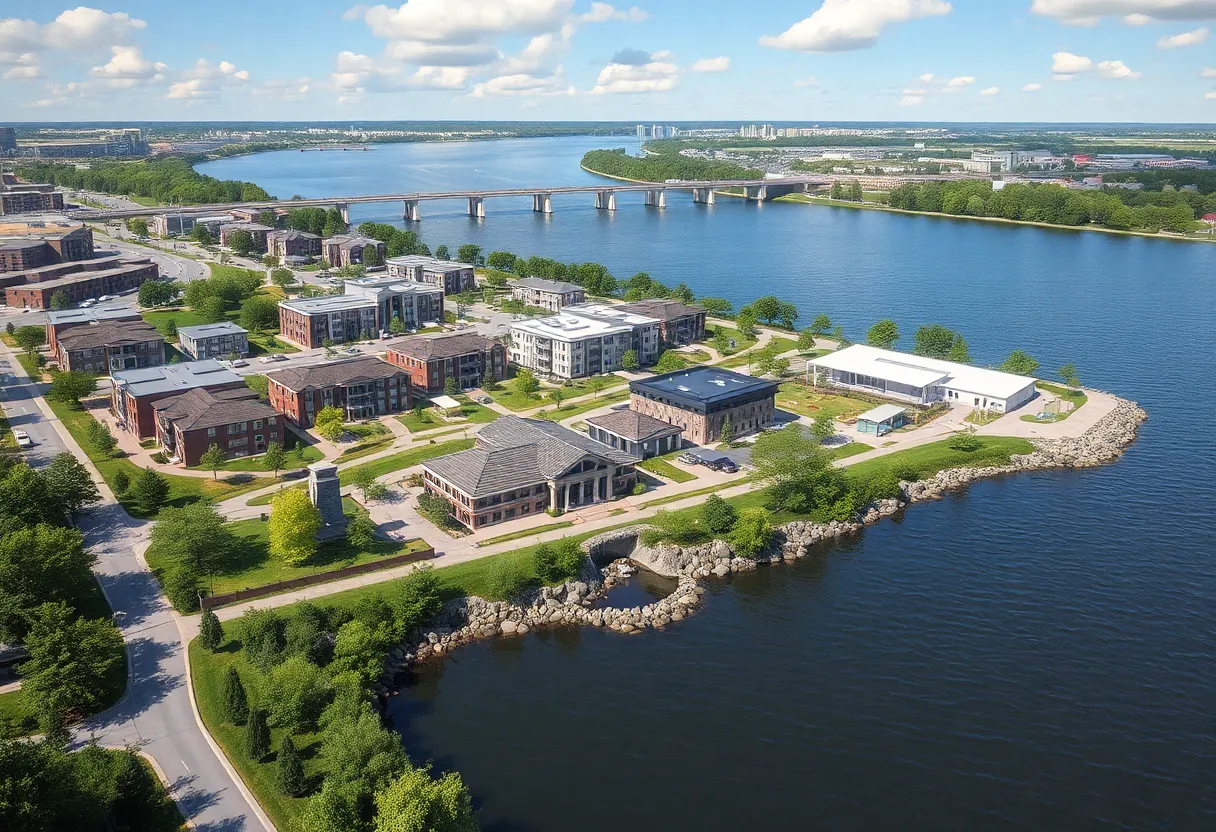Buffalo, NY, October 16, 2025
Erie County Executive Mark Poloncarz is pushing for immediate action on the stalled Heritage Point development project, which aims to revitalize waterfront areas near the Buffalo River. The project faces significant funding challenges that have slowed its progress despite its potential to enhance public access, create jobs, and boost local businesses. Amid frustrations over delays, community leaders are rallying in support of the initiative, seeing it as vital for Buffalo’s urban renewal and economic growth.
Buffalo, NY: Erie County Executive Urges Immediate Action on Stalled Heritage Point Development
Buffalo, NY – Erie County Executive Mark Poloncarz issued a strong call for progress on the Heritage Point development project, emphasizing that ongoing delays must end to unlock economic potential along the city’s waterfront. The project, designed to breathe new life into underutilized areas near the Buffalo River, faces persistent funding obstacles that have slowed its momentum in recent months.
During a recent press conference, Poloncarz expressed clear frustration with the pace of advancement, underscoring the need for decisive steps to move forward without further hesitation. His comments highlight the broader implications of the project, which promises to enhance public access to the waterfront, create jobs, and stimulate local business growth. As one of the key initiatives in Buffalo’s revitalization efforts, Heritage Point has garnered attention for its potential to transform industrial spaces into vibrant community hubs.
The development envisions a mix of residential, commercial, and recreational features, including parks, retail spaces, and housing options that cater to diverse residents. Planners aim to preserve the area’s historical significance while integrating modern amenities. However, securing stable funding remains the primary hurdle, with discussions ongoing between local authorities, private investors, and state agencies. Recent negotiations have intensified as costs continue to rise due to inflation and supply chain issues affecting construction materials.
Funding Challenges and Path Forward
Efforts to finance Heritage Point have involved multiple stakeholders, including federal grants, state economic development funds, and public-private partnerships. While initial allocations provided a foundation, additional resources are essential to cover expanded infrastructure needs, such as improved roadways, utilities, and environmental remediation for previously contaminated sites. Poloncarz’s push aligns with county strategies to prioritize projects that deliver long-term benefits, urging all parties to resolve bottlenecks swiftly.
Community leaders from various sectors, including business associations and neighborhood groups, have voiced support for accelerating the timeline. They argue that timely completion could boost tourism, attract new residents, and support small businesses in surrounding areas. The project’s location along the waterfront positions it as a cornerstone for Buffalo’s ongoing urban renewal, potentially adding thousands of jobs during construction and operation phases.
Background on Heritage Point and Regional Impact
The Heritage Point initiative emerged as part of Buffalo’s comprehensive waterfront master plan, which seeks to reclaim over 200 acres of former industrial land for public use. Launched several years ago, the project has seen preliminary phases, including site assessments and design approvals, but full-scale development has been hampered by economic uncertainties. In the past two years, similar revitalization efforts across New York State have demonstrated success, with comparable sites generating millions in economic activity and increasing property values.
Poloncarz’s remarks come at a critical juncture, as Erie County navigates budget constraints while investing in infrastructure to foster growth. The executive’s office has been actively coordinating with city officials and developers to streamline permitting processes and explore innovative financing options, such as green bonds or tax incentives. Environmental considerations also play a role, with plans incorporating sustainable practices like green spaces and flood-resistant designs to mitigate risks from the region’s climate patterns.
Beyond immediate economic gains, proponents see Heritage Point as a catalyst for social equity, aiming to provide affordable housing and community programs that benefit underserved populations. Public input sessions have shaped the project, ensuring it reflects local needs and histories. As discussions continue, the focus remains on balancing urgency with thorough planning to deliver a landmark development that endures.
The call for action underscores a shared commitment among leaders to propel Buffalo’s waterfront vision forward, positioning the city as a model for sustainable urban redevelopment in the Northeast.
FAQ
What is the Heritage Point development project?
The Heritage Point development project is an initiative to revitalize waterfront areas near the Buffalo River, featuring a mix of residential, commercial, and recreational spaces.
Why is Erie County Executive Mark Poloncarz demanding action?
Erie County Executive Mark Poloncarz is demanding immediate action due to ongoing delays that he considers unacceptable, emphasizing the need to unlock economic potential.
What are the main challenges facing the project?
The main challenges include persistent funding hurdles, rising costs from inflation, and supply chain issues affecting construction.
How does the community view the Heritage Point project?
Community leaders support the project as a push for economic growth, highlighting its potential to create jobs, boost tourism, and benefit local businesses.
What is the broader context of the project in Buffalo?
The project is part of Buffalo’s waterfront master plan to reclaim industrial land, with plans for sustainable features like green spaces and affordable housing.
Key Features of the Heritage Point Development
| Feature | Description |
|---|---|
| Waterfront Revitalization | Aims to transform underutilized areas near the Buffalo River into vibrant community spaces. |
| Mixed-Use Development | Includes residential housing, commercial retail, and recreational parks for diverse needs. |
| Economic Impact | Expected to create jobs, stimulate business growth, and boost tourism in the region. |
| Funding Approach | Relies on federal grants, state funds, and public-private partnerships to overcome hurdles. |
| Sustainability Elements | Incorporates green spaces, flood-resistant designs, and affordable housing options. |
Deeper Dive: News & Info About This Topic
HERE Resources
Frustration Mounts Over Stalled Heritage Point Project in Buffalo
Buffalo Schools Launch Initiative to Increase Teacher Diversity
Ralph Wilson Centennial Park Construction Hits Milestone in Buffalo
Buffalo Moves Forward on Heritage Point Development
Tom Golisano Acquires Buffalo News Headquarters for Revitalization
Buffalo Public Schools Address Teacher Diversity Challenges
Buffalo Golf Community Mourns Veteran Player John Andruschat
Buffalo Premiere of ‘The Gods of Paderewski Drive’ Moves Audiences
New Bars and Restaurants Open on Hertel Avenue in Buffalo
Buffalo Court Halts Demolition of Historic Cobblestone District




